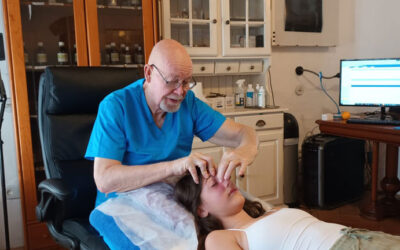Platelet rich plasma or PRP injections can offer robust long term pain and symptom relief for people suffering from thumb joint arthritis. But not all PRP is the same and overpaying for inferior quality PRP will result in poor outcomes.
In this article, I will go over what platelet rich plasma is, discuss how it works, and review data from a randomized controlled trial comparing PRP injections to cortisone injections. I will also review what you need to look out for so you don’t overpay for inferior quality PRP.
Thumb osteoarthritis, specifically at the carpometacarpal joint also known as the trapeziometacarpal joint, is a common cause of pain and disability. Despite it being a very small joint, symptoms can be debilitating. It can restrict thumb movement, cause weakness and instability of the thumb, and reduce pinch and grip strength. All of this will make day to day activities rather painful.

Abductor Pollicus
Abductor Pollicus Longus


collateral ligament
Abductor Pollicis Brevis
Flexor Retinaculum
And while traditional treatment options for thumb osteoarthritis, such as medications and splinting, may provide some pain relief, they may not always be effective in managing severe symptoms. And this is why physicians may recommend a corticosteroid injection in such cases. But the reality is that these shots do not provide long-term symptom relief and to make matters worse, corticosteroid injections can cause damage to healthy cartilage.
Cortisone injections in knees and hips are associated with developing worse arthritis as well as a condition known as rapidly destructive joint disease. For this reason, it is essential to move away from the toxicities of cortisone injections and explore alternative treatment options.
Platelet Rich Plasma injections can fill this treatment gap. PRP involves drawing blood from the patient, separating it into layers using a centrifuge, and taking the layer that has platelets and growth factors and injecting it into an area that is causing pain or disability.
The underlying concept behind PRP is based on the fact that our bodies have an incredible amount of growth factors and signaling molecules that can help reduce pain and inflammation. Platelets are one such molecule that can activate cascades which can alleviate symptoms.
PRP injections have been studied extensively and have been shown to be beneficial for many other orthopedic conditions, but do they work for the treatment of thumb osteoarthritis? This randomized controlled trial looked to compare ultrasound guided intra-articular PRP injections vs corticosteroid injections for the treatment of mild to moderate thumb joint arthritis. Bone on bone or grade 4 osteoarthritis was excluded from the study.
A total of 32 patients were divided into two groups, group A got two PRP injections while group B got two corticosteroid injections. The second injections in each group were administered 15 days after the first one.
The study’s PRP consisted of a 20 mls blood draw which was concentrated down to 2 mls final volume. The authors did not report platelet counts or concentrations, but by my estimate it would be around 3 billion platelets. Two injections of 3 billion platelets would equate to roughly 6 billion platelets total. Patients were then assessed at 3 months and 12 months with visual analog pain scores and a Q-DASH questionnaire.
With regards to pain scores, both treatment modalities had significant improvements at 3 months compared to their respective pre intervention scores. At 12 months, the PRP group continued to show significant improvement in scores whereas the steroid group had scores that were essentially back to baseline.
Functional and symptom assessment via the Q-DASH score showed similar results. Both groups improved at 3 months compared to their baseline. At 12 months, the PRP group continued to show improvements whereas the steroid group was back to baseline.
Satisfaction levels at 12 months were significantly higher in the PRP group when compared to the steroid group. Almost 70% of patients reported being satisfied with PRP treatment when compared to only 13% in the steroid group.
The authors go on to conclude that “PRP injections significantly improve pain and function from mild to moderate thumb joint arthritis in both the mid- and long-term and achieve significantly better results in the long-term compared with intra-articular steroid injections.”
Now I tried looking through pubmed for additional studies but unfortunately, there is a severe lack of clinical trials specifically examining the effectiveness of PRP in treating thumb joint arthritis. The only other study listed on pubmed was this pilot study with a mere 10 patients who also received two PRP injections spaced 4 weeks apart.
Their PRP was obtained from a 15 mls blood draw and concentrated to a final volume of 1-2 mls, yielding approximately 2 billion platelets per injection and 4 billion platelets total. While this study showed significant pain relief benefits at a 6-month follow-up, there were no improvements observed in DASH scores.
Ok so what are my thoughts on these studies? The first thing I want to say is that there just aren’t enough studies right now. From the two studies that we have, the big critique is that their sample sizes are small, making it difficult to draw broad conclusions.
Nonetheless, the available evidence suggests that PRP may be an effective treatment option for thumb arthritis and may be superior to corticosteroid injections. I’m comfortable making this conclusion because the data is consistent with clinical trial data for other indications that have been studied much more extensively. This includes knee osteoarthritis, tennis elbow, golfer’s elbow, plantar fasciitis, and gluteal tendinopathy.
In addition, PRP injections can potentially slow the progression of arthritis. Introducing a large number of platelets and growth factors into an arthritic joint can modify the joint’s internal environment. Specifically, it can shift the environment from a toxic and inflammatory state to a more neutral one. Clinical studies conducted on knee arthritis patients have demonstrated a decrease in inflammatory markers such as TNF alpha and IL 1 beta in the joint 6 months following PRP treatment.
The reduction of these inflammatory markers not only improves symptoms but also slows the progression of arthritis. One study has suggested that PRP injections can reduce the rate of arthritis progression by 50% over 5 years when compared to placebo. This highlights the promising potential of PRP as a treatment that can not only help with symptoms, but that may also have disease modifying effects.
In addition, recent studies on PRP have placed a much larger emphasis on platelet counts and the dose-response relationship. This is actually an extremely important point that many physicians overlook. Many doctors think all PRP injections are the same and don’t understand that just like with everything else in medicine, there is a dose response relationship. This has been extensively studied in knee osteoarthritis where low dose PRP is no better than placebo whereas higher dose PRP results in superior outcomes
My recommended approach for the treatment of CMC joint arthritis is to begin with a 30 mls blood draw, which typically provides approximately 5-6 billion platelets for one treatment. This is then concentrated down to a volume of 1 ml.
I have seen excellent results using this PRP dose with symptoms lasting up to 1 year for patients with mild to moderate arthritis. I’ve even seen decent results with grade 4 osteoarthritis, though these patients tend to need more frequent injections to manage their symptoms effectively.
So what actually happens when arthritis develops in the Thumbs?
When the funds are overused such as waitressing, needlework and selling, gripping excessively between forefinger and thumb or writing in the mobile phone the ligaments which support the thumbs become overstretched and lax.

The body compensates for this instability by tightening the muscles that cross the thumb joint thereby reducing the range of movement and causing pain.
The instability of the joint gradually causes erosion of the articulating cartilage which covers the end of the bones and a diagnosis of osteoarthritis is given by the doctor along with anti-inflammatories, cortisone injections and splints.
This treatment is purely symptomatic and will alleviate discomfort for a short period but is not treating the underlying cause of the problem and so the symptoms will reappear. Not only that further degeneration will occur which may lead to surgical intervention.


0 Comments